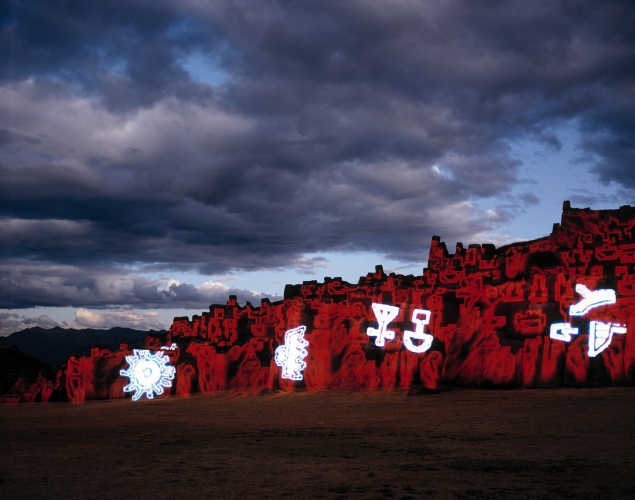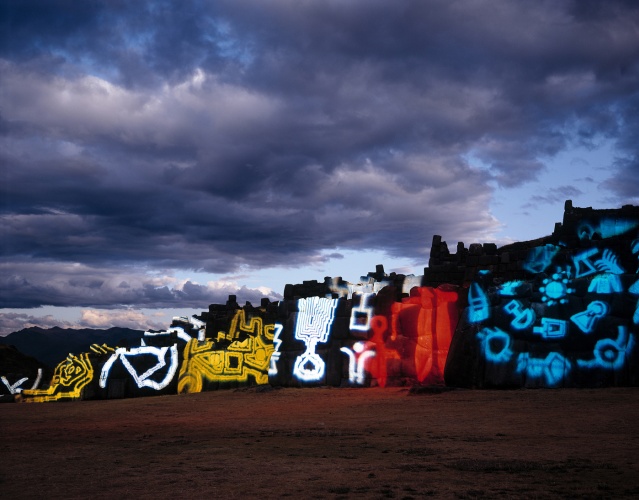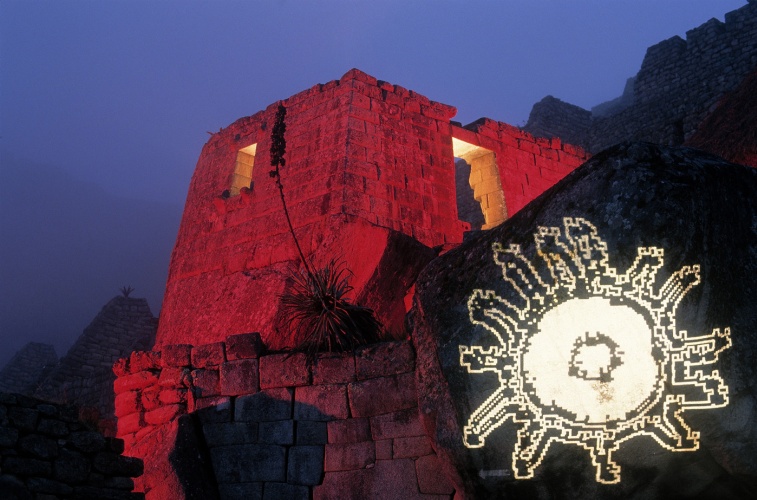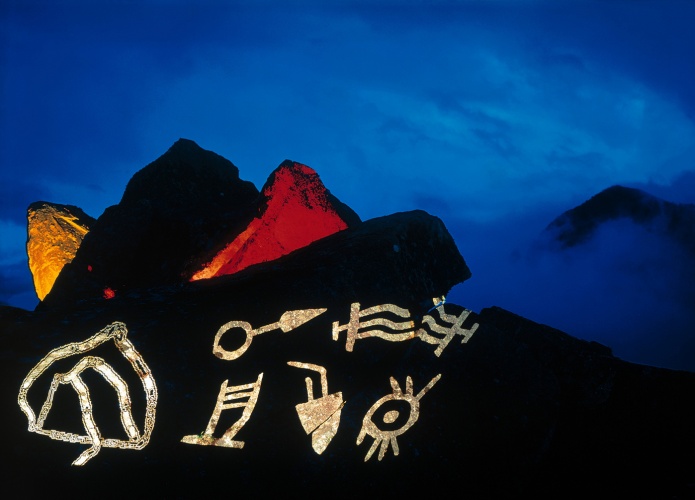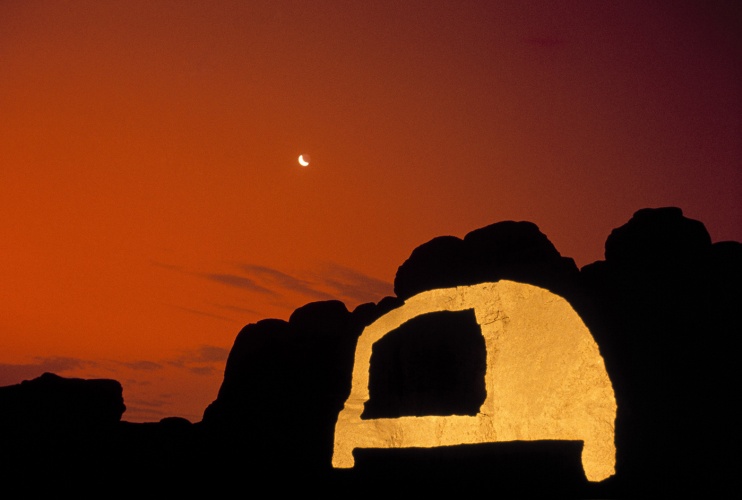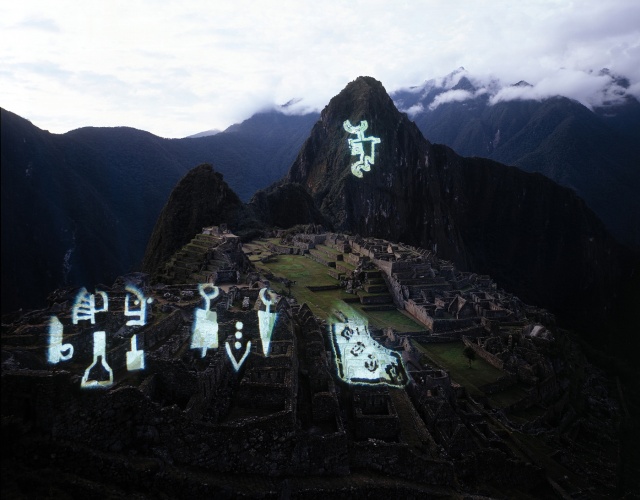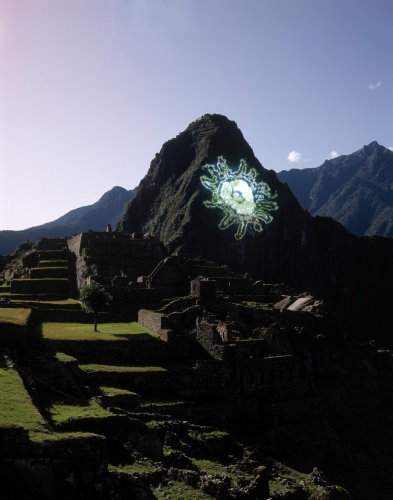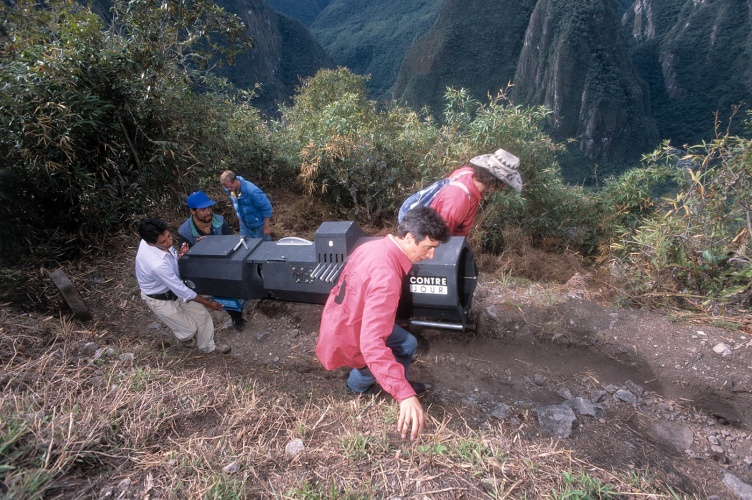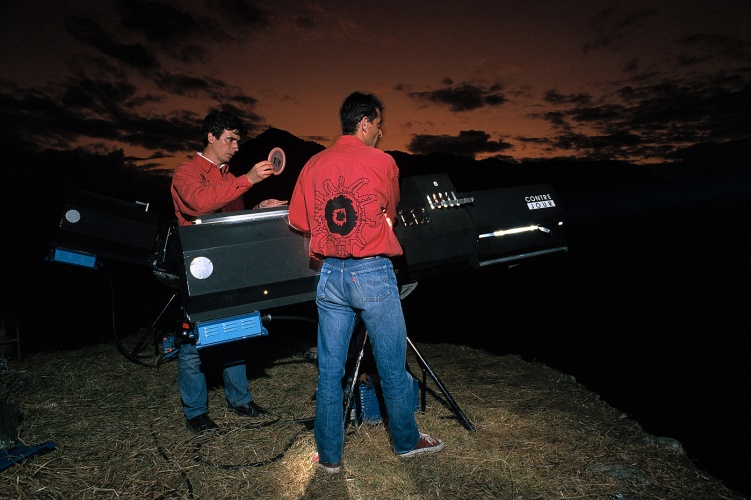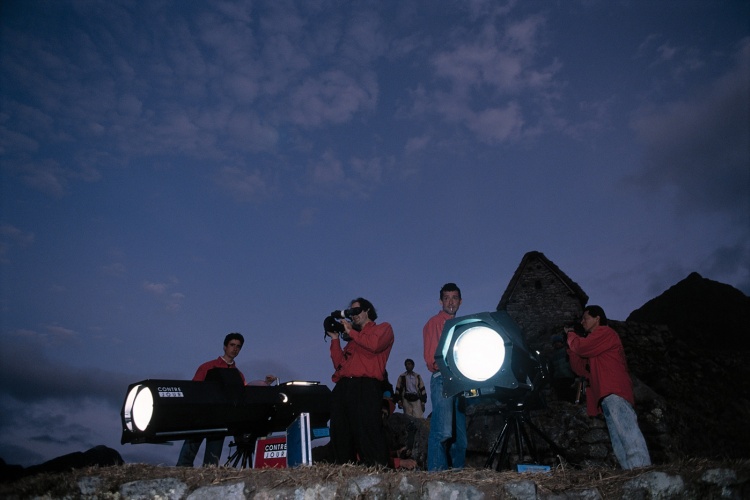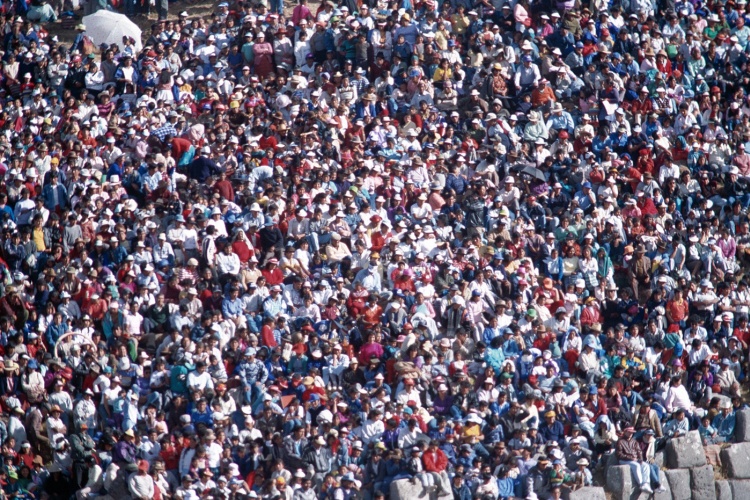Imprints on the Andes
Date:
1992
Ref:
0003
Catalogued:
Lucy + Jorge Orta. Light Works, Black Dog Publishing, 2010, ISBN 978-1-907317-04-0
Exhibition history:
Andes Mountain Range
Courtesy:
The Artists
Marking the 500th anniversary of the discovery of the American continent by Christopher Columbus, Imprints on the Andes along the Inca trail was carried out during a treacherous five-week expedition across the Peruvian cordilleras. The Light Works coincided with the capturing of Abimael Guzmán, the leader of the Sendero Luminoso (Shining Path), a Maoist guerrilla organisation in Peru, and a wave of violent attacks surged. The aid promised by the French Embassy in Lima to realise the work was reduced and some of the French team had to abandon, leaving Lucy + Jorge Orta and associate Claude Namer to mount the expedition with a new, inexperienced crew and an armed guard.
The highly symbolic date set for Imprints on the Andes marked the most important gathering of over one hundred thousand people in Cuzco, the historic centre of the Inca Empire, to celebrate the Inti Raymi (Festival of the Sun). The Light Works projections commenced on the Cuzco Cathedral, gliding over the baroque facades of Plaza de Armas and onto the surrounding hills, in front of the awe-inspired audience of thousands.
After the Inca celebrations Lucy + Jorge Orta followed the cortège to the ancient fortress of Sacsayhuamán, in the hills above Cuzco. Here the crew worked for several nights until the early hours of the morning before sunrise in the ruins with a petrol generator, in freezing conditions and at the breathless altitude of 3,700 metres. The PAE projectors have a light output of 2,500–5,000 watts each and can project mobile images up to 5,000 square metres from a distance up to 1,000 metres. After the exhausting nights in the ruins of Sacsayhuamán, further light experiments continued in the Inca ruins of Tampu-Machay: the ancient water source which served the city of Cuzco, a sacred site based on the cult of water. After another night of projections and a performance in Quenko the PAE image projectors were loaded into the cargo wagon at Cuzco station for the spectacular train journey along the Sacred Valley to the ancient ruins of Machu Picchu.
The train to Machu Picchu descends 2,000 metres into the Sacred Valley with dramatic views of the Urubamba River canyon at the foothills of the deep green Andes with their snow-covered caps. The crew off-loaded the 1200kg of equipment at the Aguas Caliente station for the treacherous lorry drive back up the hairpin bend tracks to the entrance of the Inca citadel. Once inside the ruins, the projection equipment and petrol generators were carried on foot to sacred locations throughout Machu Picchu. Camping amongst the silent ruins, the crew worked in the bitter cold from dusk until dawn to paint the ancient stone walls, temples and surrounding peaks with light signs: fours hours for two minutes of video, one hour for three minutes of 35mm film and all night long for just two photographs to record Imprints on the Andes.
Because man wishes to hold the cold sun in his hands
From where the sun watches from the sky
Because man establishes his difference
On the slice of mirror which cuts the sky
Into two suns
--Serge Pey on Temple of the Sun, Machu Picchu, Peru
